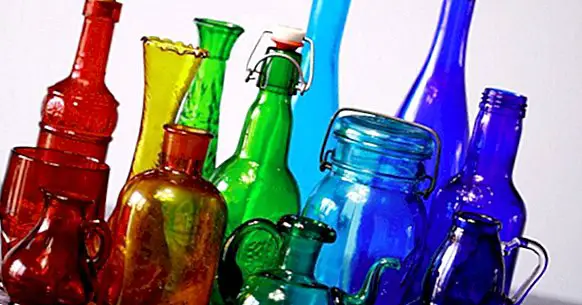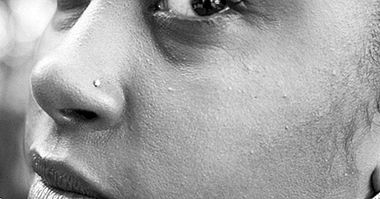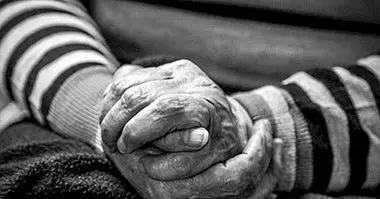Nelophobia (fear of glass): symptoms, causes and treatment
The nelophobia is the persistent and intense fear of glass. It can be described as a specific type phobia, and as such, there are many elements that can cause it. There are also different ways to reduce the person's anxiety responses.
In this article we will see what is the nelofobia , in what other way is called, what are its main causes as well as some strategies for its evaluation and treatment.
- Related article: "Types of phobias: exploring the disorders of fear"
Nelophobia: fear of glass
The nelophobia is the persistent and intense fear of glass. Being a phobia, this fear is presented in an irrational way, that is, it is not justified by the cultural codes of the person. Another term used to refer to the phobia of glass, are "hieloofobia" or "hyalofobia" and "cristalofobia".
The term "hyalophobia" is one of the synonyms of the most used nelophobia. It is composed of the Greek "ýalos" which means "crystal", and "fobos" which means "fear" or "fear". While it is a generalized fear, but rather it manifests itself before a specific stimulus (glass), this could be considered a specific type phobia.
As such, this fear is considered a specific phobia when the anticipation, avoidance or discomfort related to the stimulus interferes in an important way with the person's daily routine (their academic, work, personal, etc.), and this is not the case. can explain other diagnoses such as Obsessive-Compulsive Disorder, post-traumatic stress or social phobia.
Finally, the person may be aware that their fear is excessive, although not necessarily.
symptom
In general, the main symptoms of specific phobias are those related to an intense anxiety response. They are caused by the activation of the autonomic nervous system once the person has been exposed to the stimulus and includes manifestations such as sweating, hyperventilation, increased heart rate, decreased gastrointestinal activity , and in some cases a panic attack can be triggered. This is more common when the stimulus causing the phobia does not present significant opportunities to be avoided.
In the same sense, specific phobias cause some manifestations of secondary type, which are those that are not easily observed, but can negatively affect the functionality of the person. It is, for example, constant defensive and defensive behaviors .
Likewise, the fear is caused by perceiving the possibility of damage, which in the case of the nelophobia could be suffering some injury caused by the glass. However, another type of specific phobias may be caused by a different concern, related to making a fool of yourself, losing control, experiencing unpleasant physical sensations or suffering a panic attack.
- Maybe you're interested: "Types of Anxiety Disorders and their characteristics"
Probable causes
One of the most accepted explanatory theories about the development of phobias is the theory of preparation, which says that it is enough to have had a direct or indirect aversive experience with the stimulus to increase the probability that a fear becomes a phobia. In other words, one of the causes of specific phobias is having had a direct negative experience with the stimulus , or have witnessed this experience.
In the case of the nelofobia it would be for example to have had some wound or accident where the glass was involved, or to have seen someone else suffer it.
In the same line, another element that can increase the probability of developing a phobic fear is the severity and frequency of negative experiences, that is, how much real damage caused the exposure to the stimulus and how many times this has happened. So, it's more likely develop fear of stimuli that represent a significant threat for physical integrity and biological stability.
However, some studies have reported that this criterion is not always met. There are fears that do not correspond to the history of direct and indirect negative experiences, so it is important to have an in-depth evaluation of the way in which the threatening information has been transmitted, acquired and consolidated.
Evaluation
The clinical evaluation should start by exploring what are the feared and avoided situations, as well as the behaviors that are generating problems in terms of functionality.For example, the expectations of danger (the cognitive level), the avoidant or defensive behaviors (the motor dimension), the degree of anxiety response (physiological dimension), and the experience of fear (the emotional level).
Subsequently it is important to detect which elements of the problem are becoming worse, or reducing, especially with respect to the stimulus. This refers, for example, to evaluate the frequency of exposure to the stimulus and the degree of danger it represents, as well as the related escape alternatives. In the case of this phobia, it would be a question of determining the level of exposure of the person to the environments with glass, how risky they can be and what alternatives of risk reduction exist.
It is also important to know the life history of the person and the associations made with respect to the stimulus that he perceives as harmful. From there, detect the resources and coping strategies to determine what factors need to be reinforced, diminished or accompanied.
Treatment
On treatment, the theory of non-associative explanation, which says that phobias can be generated without the need for associative learning, has postulated that the fear response can decrease when the person is exposed in a negative and repeated way to the feared stimuli .
In the same sense, some of the most used techniques are relaxation techniques, systematic desensitization, imagination techniques, exposure through virtual reality, the model of vicarious exposure, among many others.
The effectiveness of each one depends to a large extent on the intensity of the anxiety response as well as personal history and the degree of risk represented by the phobic stimulus.
Bibliographic references:
- Bados, A. (2005). Specific phobias Factultat of Psychology. Departament de Personalitat, Avaluació i Tractament Psicològics. University of Barcelona. Retrieved September 24, 2018. Available at //diposit.ub.edu/dspace/bitstream/2445/360/1/113.pdf.
- Hyelophobia (2017). Common-phobias.com. Retrieved September 24, 2018. Available at //common-phobias.com/Hyelo/phobia.htm.
- Nelophobia (S / A). Phobia wiki. Retrieved September 24, 2018. Available at //phobia.wikia.com/wiki/Nelophobia.



















